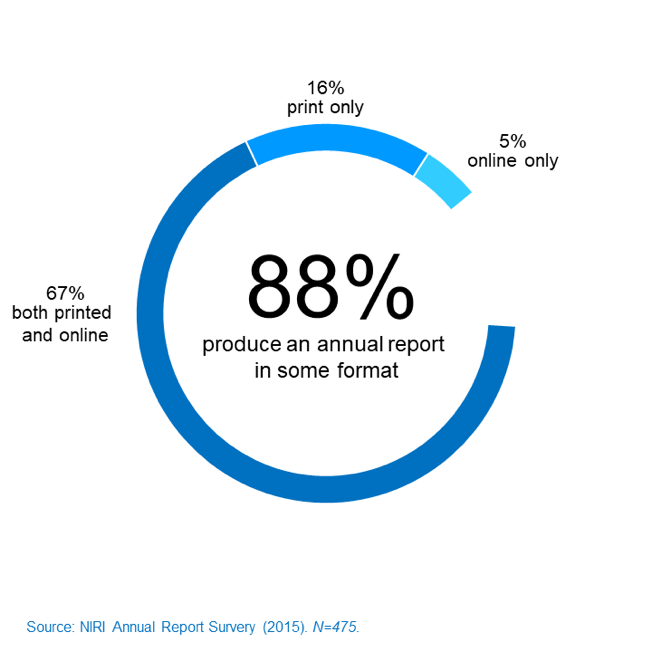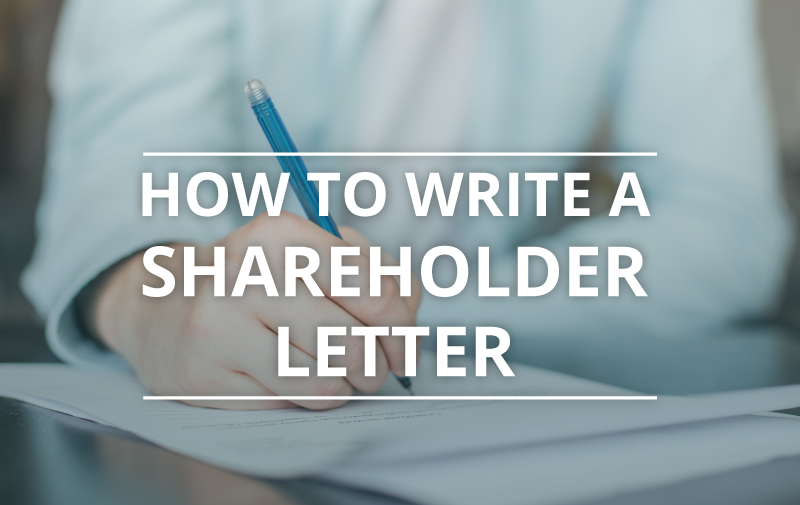A shareholder letter is an opportunity for a CEO to directly communicate with shareholders and to clearly lay out his or her vision for the company, align employees and other stakeholders around that vision, and highlight its current progress toward long-term goals. In 2015, a NIRI report survey found that 88% of companies produce an annual report in some format.

The same survey reported that a 10-K Wrap is the most popular type of shareholder communication, with 74% of survey respondents opting for this format, a 40% increase since 2008. A 10-K Wrap is a summary report of a company’s annual performance that bundles the 10-K report (which is required by the Securities and Exchange Commission) with additional commentary from the company. It covers topics such as the corporate vision, letters to shareholders and the business overview.
Collectively, we have written, edited and read hundreds of shareholder letters. Below are a few tips to produce the most effective letter for your shareholders.
Create a format that will benchmark performance. Using a similar format each year will help shareholders easily benchmark a company’s performance. Letters typically begin with a high-level review of the year followed by financial performance and a more detailed assessment of business segments or core growth objectives.
Focus on accomplishments, not activities. Rather than listing activities that occurred, focus on accomplishments that propelled the business forward. What milestones did you outline in last year’s letter? Were those achieved?
Look forward. Shareholder letters typically close with a look ahead. This is not the time to identify new milestones or corporate objectives, but rather to reiterate your previously communicated outlook and strategy for long-term growth. What milestones will spell success in the coming quarters? What do you hope to achieve in the current year, and what are the longer-term goals? Without being overly promotional, your letter should get investors excited about what is ahead.
Rigorously review. You already know that all materials disseminated to investors must be accurate. However, the stakes with a shareholder letter are even higher than a typical investor communication. Your letter to shareholders will be included in your Annual Report, printed by the thousands and mailed directly to shareholders. It is imperative that all appropriate parties — especially your CEO, CFO, general counsel and head of investor relations— review and approve every iteration of the letter.
Conclusion
Spending the time to craft a well-honed message in your shareholder letter allows you to set the tone for the year ahead when it comes to setting goals, achieving milestones and aligning your audience around your vision. Let us utilize our many years of experience in developing strong shareholder letters to set your company on the right path for the coming year.
Carrie Mendivil, Principal


Leave a Reply